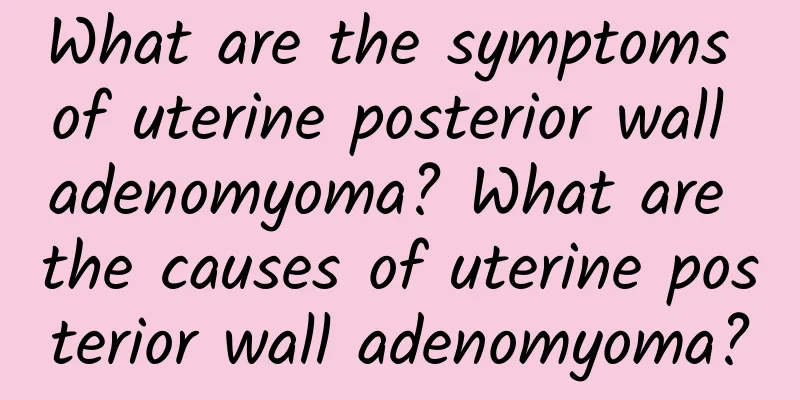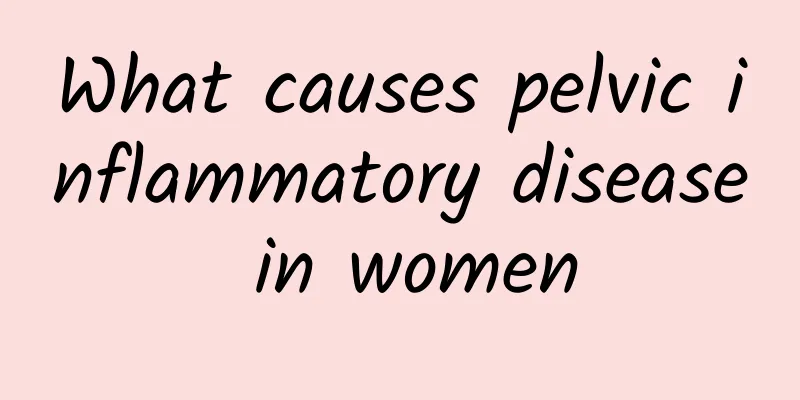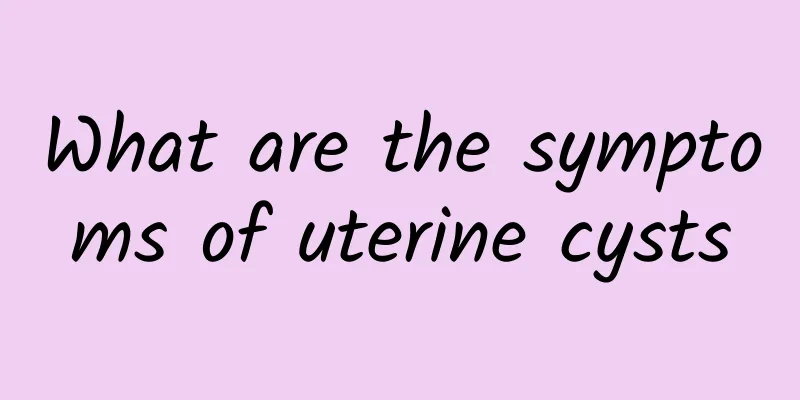What are the symptoms of uterine posterior wall adenomyoma? What are the causes of uterine posterior wall adenomyoma?

|
What are the symptoms of uterine posterior wall adenomyoma? What are the causes of uterine posterior wall adenomyoma? Uterine fibroids are a common female disease, and posterior uterine adenomyosis is one of the most common types. This article will focus on the symptoms and causes of posterior uterine adenomyosis. 1. Symptoms of adenomyoma of the posterior uterine wall 1. Abnormal menstruation: Patients with adenomyoma on the posterior wall of the uterus may experience abnormal menstruation, such as excessive or insufficient menstrual flow. The reason is that the fibroids are located on the posterior wall of the uterus, compressing the uterine cavity and causing menstrual irregularities. 2. Pain: Patients with adenomyoma on the posterior wall of the uterus may feel pain in the pelvis or lower back. When the fibroids grow larger and compress the surrounding tissues, it can cause discomfort and pain. 3. Frequent urination and difficulty in defecation: If the uterine posterior wall fibroids begin to compress the bladder, the patient may experience symptoms of frequent urination. When the fibroids compress the rectum, defecation may become difficult. 4. Sexual problems: Adenomyosis on the posterior wall of the uterus may cause discomfort or pain during sexual intercourse. Compression of pelvic tissue may cause pain and affect the quality of sexual life. 5. Abdominal mass: When the uterine posterior wall fibroids are large or numerous, the patient may feel a mass in the abdomen. This is a mass caused by the presence of fibroids. 2. Causes of uterine posterior wall adenomyosis 1. Genetic factors: Studies have found that personal genetic background and family history are associated with the formation of uterine fibroids. Women with family members suffering from uterine fibroids are more likely to develop adenomyoma of the posterior uterine wall. 2. Hormone levels: Estrogen is the main driving force in the formation of uterine fibroids. The formation of uterine posterior wall fibroids is related to the imbalance of glucocorticoids, progesterone and ovarian hormones, which can cause the endometrium to thicken, thereby promoting the growth of fibroids. 3. Age factor: Age is an important factor in the occurrence of uterine fibroids. As women age, their risk of developing uterine fibroids increases. The formation of uterine posterior wall fibroids is related to changes in hormone levels and endometrial growth. 4. Other factors: Obesity, dietary habits, and reproductive history may also affect the occurrence of uterine fibroids. Obesity is associated with the formation of adenomyomas on the posterior wall of the uterus, and high sugar and high fat intake in dietary habits may increase the risk of disease. In addition, women who have never been pregnant or have never given birth are also more likely to develop uterine fibroids. in conclusion: In summary, the symptoms of posterior uterine wall adenomyoma include menstrual abnormalities, pain, frequent urination and difficulty in defecation, sexual problems and abdominal lumps. The formation of posterior uterine wall adenomyoma is related to genetic factors, hormone levels, age and other factors. For women with posterior uterine wall adenomyoma, regular examination and diagnosis are necessary to detect and treat this disease early and maintain women's health. |
>>: What kind of wine is effective in treating uterine fibroids? What can cure uterine fibroids?
Recommend
What are the symptoms of pelvic inflammatory disease?
Recently, the number of patients with pelvic infl...
What are the types of artificial abortion for women?
Women should choose the most appropriate time to ...
Can obese people eat grapefruit? Nutritionist Gao Minmin: 6 types of people should be careful when eating grapefruit
"Pomelo" meets Mid-Autumn Festival, the...
How can I eliminate uterine cysts and what medicine should I take?
Uterine cysts require a doctor's diagnosis an...
Eat sweets when it’s cold? 1 slice of cheesecake = 300 calories
There are many year-end gatherings, and you can’t...
What are the main causes of ectopic pregnancy?
Ectopic pregnancy is also called ectopic pregnanc...
What are the causes of obesity and irregular menstruation? Women's irregular menstruation is related to these factors
The incidence of irregular menstruation is high. ...
How to self-diagnose ovarian cysts and what dietary treatments are there?
What is the self-diagnosis method for ovarian cys...
Is chocolate cyst puncture painful?
Is chocolate cyst puncture painful? Chocolate cys...
Doctor: Remember these 3 points about diet with high prolactin
High prolactin can be regulated through diet, suc...
How to regulate irregular menstruation after artificial abortion Why does artificial abortion lead to irregular menstruation
1. Causes of irregular menstruation after artific...
What are the sequelae of microwave treatment for female cervical erosion? Three points to note when microwave treatment for female cervical erosion
Most women have some gynecological diseases, amon...
Improper surgery is the main cause of cervical erosion
The incidence of cervical erosion is so high that...
External treatments that effectively relieve dysmenorrhea
In addition to taking medication to relieve pain,...
Love high-intensity exercise? Be careful or your heart will be broken!
There are four keys to protecting your heart: qui...









